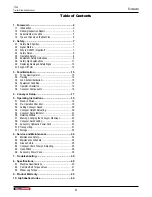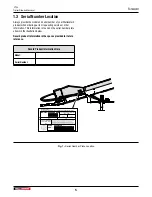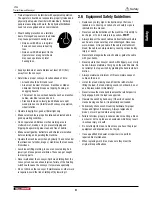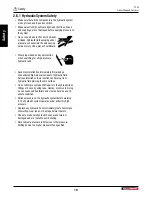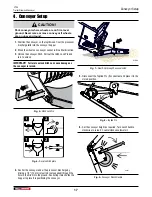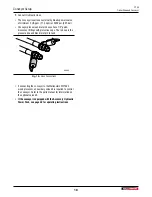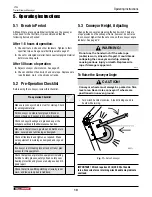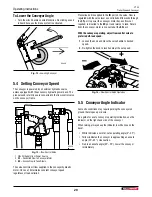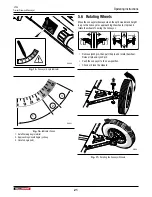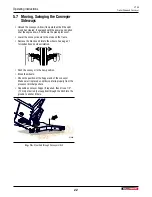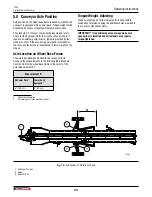
•
Train all operators to be familiar with equipment operation.
The operator should be a responsible, properly trained and
physically able person familiar with machinery. If elderly
people are assisting with work, their physical limitations
need to be recognized and accommodated.
•
Wear hearing protection on a full-time
basis. Prolonged exposure to loud noise
may cause permanent hearing loss!
• Noise over 85 dB on a long-term
basis can cause severe hearing
loss.
• Noise over 90 dB adjacent to the
Operator over a long-term basis
may cause permanent, total
hearing loss.
•
Keep bystanders at a safe distance at least 20 ft (6 m)
away from the conveyor.
•
Determine a proper conveyor location ahead of time:
• Ground should be firm and level.
• Area must be clear of stones, branches or hidden
obstacles that might cause a tripping, hooking, or
snagging hazard.
• There must be no overhead hazards such as branches,
cables, electrical wires and so on.
• Stack split wood on level ground. Make sure split
wood pile does not interfere with conveyor operation,
wheel rotation.
•
Operate in daylight or good artificial light only.
•
Make sure machine is properly stationed, adjusted and in
good operating condition.
•
Do not operate on hillsides or when working area is
cluttered, wet, muddy, or icy to prevent slipping and
tripping. Keep working area clean and free of debris.
•
Make sure all guards, deflectors and shields are installed
before starting and operating the machine.
•
Operate the machine only when physically fit and not under
the influence of alcohol, drugs or medicines that can cause
drowsiness.
•
Avoid loose fitting clothing, loose or uncovered long hair,
jewelry and loose personal articles. These can get caught
in moving parts.
•
Never walk under the conveyor. Split wood falling from the
conveyor can cause serious injuries. Failure of the hoisting
winch could cause the conveyor to lower unexpectedly.
•
Do not climb on the conveyor. If maintenance or other work
is required, avoid the risk of falling off by lowering it.
2.6 Equipment Safety Guidelines
•
Replace any safety sign or instruction sign that is not
readable or is missing. Location of such safety signs is
indicated in this manual.
•
Never exceed the limitations of the machine. If its ability to
do the job, or to do it safely is in question–
STOP!
•
Always inspect the winch cable and its attachment before
each use to make sure they are not damaged. Never use
worn, kinked, or frayed cable. If the cable or attachment
break, the cable can whip violently, causing serious bodily
injury or death.
•
Never stand alongside the winch cable or guide the cable
with your hands.
•
Never operate the conveyor winch with slippery, wet, or oily
hands. Always maintain a firm grip on the winch handle. Do
not attempt to stop a winch by grabbing the handle while in
motion.
•
Always maintain a minimum of three complete wraps of
cable on the drum.
•
Listen for a loud clicking sound from the ratchet when
lifting the load. If a loud clicking sound is not heard, do not
use. Replace winch immediately!
•
Never release the crank handle unless the ratchet pawl is
fully engaged, and the load is supported.
•
Operate the winch by hand only. If the winch cannot be
cranked using one hand, it is potentially overloaded.
•
Periodically check winch mounting hardware for proper
torque and tighten if necessary. Always replace bent,
broken, or worn parts before using winch.
•
Failure to follow proper procedures when mounting a tire on
a wheel or rim can produce an explosion which may result
in serious injury or death.
•
Do not attempt to mount a tire unless you have the proper
equipment and experience to do the job.
•
Have a qualified tire dealer or repair service perform
required tire maintenance.
•
When replacing worn tires, make sure they meet the
original tire specifications.
CT24
Trailer Firewood Conveyor
Safety
Safety
9



